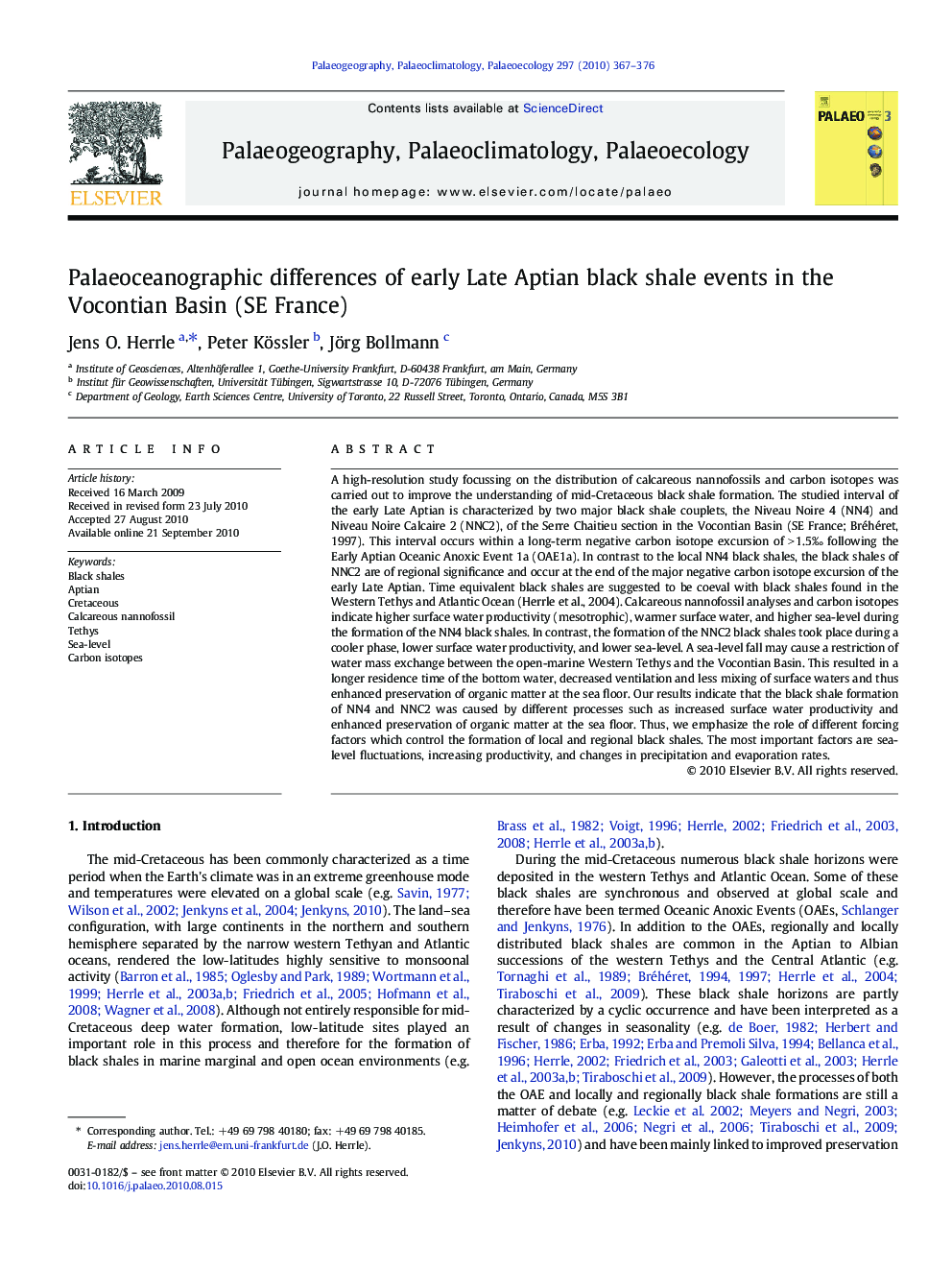| Article ID | Journal | Published Year | Pages | File Type |
|---|---|---|---|---|
| 4467482 | Palaeogeography, Palaeoclimatology, Palaeoecology | 2010 | 10 Pages |
A high-resolution study focussing on the distribution of calcareous nannofossils and carbon isotopes was carried out to improve the understanding of mid-Cretaceous black shale formation. The studied interval of the early Late Aptian is characterized by two major black shale couplets, the Niveau Noire 4 (NN4) and Niveau Noire Calcaire 2 (NNC2), of the Serre Chaitieu section in the Vocontian Basin (SE France; Bréhéret, 1997). This interval occurs within a long-term negative carbon isotope excursion of > 1.5‰ following the Early Aptian Oceanic Anoxic Event 1a (OAE1a). In contrast to the local NN4 black shales, the black shales of NNC2 are of regional significance and occur at the end of the major negative carbon isotope excursion of the early Late Aptian. Time equivalent black shales are suggested to be coeval with black shales found in the Western Tethys and Atlantic Ocean (Herrle et al., 2004). Calcareous nannofossil analyses and carbon isotopes indicate higher surface water productivity (mesotrophic), warmer surface water, and higher sea-level during the formation of the NN4 black shales. In contrast, the formation of the NNC2 black shales took place during a cooler phase, lower surface water productivity, and lower sea-level. A sea-level fall may cause a restriction of water mass exchange between the open-marine Western Tethys and the Vocontian Basin. This resulted in a longer residence time of the bottom water, decreased ventilation and less mixing of surface waters and thus enhanced preservation of organic matter at the sea floor. Our results indicate that the black shale formation of NN4 and NNC2 was caused by different processes such as increased surface water productivity and enhanced preservation of organic matter at the sea floor. Thus, we emphasize the role of different forcing factors which control the formation of local and regional black shales. The most important factors are sea-level fluctuations, increasing productivity, and changes in precipitation and evaporation rates.
